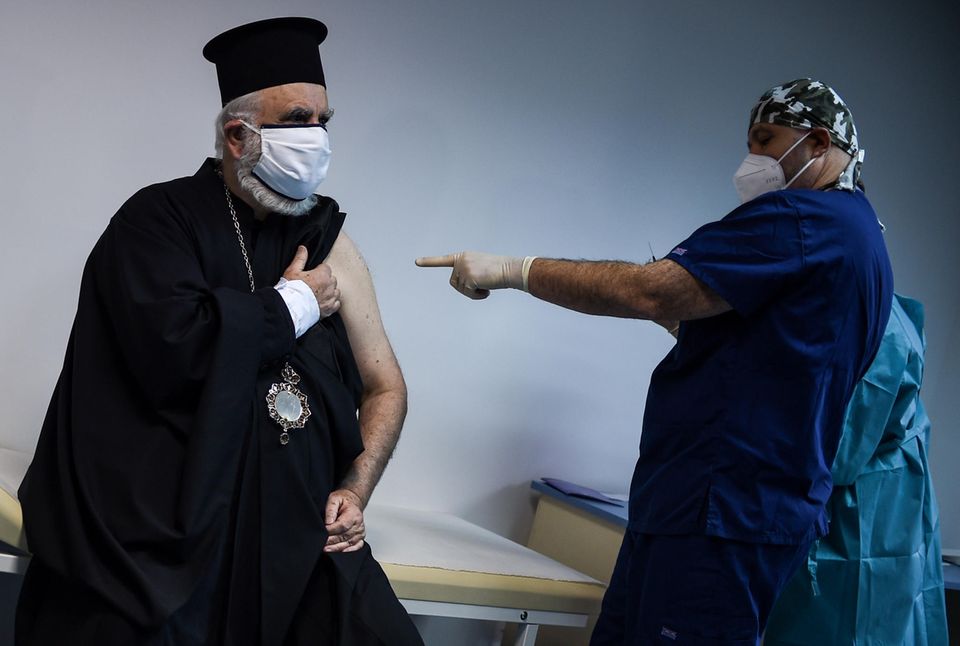New Corona criteria
Why other factors are needed in addition to the hospitalization rate

People in a Berlin park
© Kira Hofmann / DPA
For a long time, the incidence was the decisive factor in assessing the corona infection process. With an increasing vaccination rate, however, it recently lost its meaningfulness. In the future, the hospitalization rate will play a decisive role – but other factors will also be taken into account.
More and more people in Germany are vaccinated and only have a low risk of severe corona events. The incidence as the sole factor in the pandemic has thus served its purpose, but remains as a further corona benchmark. Why is that? And which values are now coming into focus?
In the future, the so-called Hospitalization rate the Bundestag decided on Tuesday in the new version of the Infection Protection Act to play a decisive role in the assessment of the infection situation. The value takes into account how busy the hospitals are and is calculated from the number of corona patients admitted per 100,000 inhabitants within seven days. The clinic incidence mainly records severe courses – lighter diseases, for which no hospital stay is necessary, are not included in the statistics. If there is a threat of overloading the clinics, the individual federal states can take regional countermeasures and, for example, issue new requirements.
The Robert Koch Institute (RKI) has been reporting the hospitalization rate in its daily situation reports for some time. 638 Covid patients were recently admitted to the clinics within 24 hours, according to the current report. The nationwide hospitalization rate is thus 1.79 per 100,000 inhabitants.
Countries determine critical thresholds
However, the nationwide value will not play a big role when it comes to taking new measures. This will be the responsibility of the countries in the future. You can set the limits yourself and be guided by the regional hospital capacities. Bavaria, for example, has announced a traffic light system. From a hospitalization rate of 1200 patients within seven days, the traffic light jumps to yellow, which results in stricter corona rules.
However, the “clinic incidence” as the sole guideline is not undisputed, since it does not take into account the risk of “long Covid”, among other things. In addition, it does not reflect the current course of infection. People who come to a hospital with severe courses have already become infected several days earlier. If only the number of hospital admissions is taken into account, countermeasures could possibly take effect too late, critics fear. For this reason, the well-known Seven-day incidence of new infections as a current and additional factor. However, from now on it should not play such an important role as in recent months.
The incidence had recently lost increasing significance, which is mainly due to the increasing number of vaccinations: Although vaccinated people can continue to be infected with the virus in rare cases. But they usually get sick only mildly. The result: Even with higher numbers of cases, the number of seriously ill Covid-19 patients who are dependent on hospital treatment is lower than with comparable incidences last year. This allows, in a sense, higher numbers of cases, although not indefinitely – especially with regard to population groups that have not yet been vaccinated.
Vaccination rate moves into focus
An important factor, which is also important, is accordingly the Vaccination rate. It will also be taken into account as a further benchmark in the future. The intensive Care Physicians association Divi has recently pointed out the connection between incidence, vaccination rate and the number of intensive care beds: “Already from incidences of 200/100, 000, a significant burden on intensive care units with more than 3000 Covid-19 patients can be expected, unless the vaccination rate is significantly increased,” says a publication on the topic.
There are large differences between individual federal states. The bottom line is mainly eastern federal states. According to figures from the Robert Koch Institute, 52.6 percent of the population in Saxony had been fully vaccinated up to and including Monday-compared to 71.5 percent in Bremen. Brandenburg, Thuringia and Saxony-Anhalt are also below the national average of 61.4 percent. These differences are not to be seen lightly: “A few percentage points in the vaccination rate have a significant impact on the potential intensive population in the fall,” the publication continues.
As a further factor, therefore, the Situation in intensive care units important. Here, the hospitalization rate does not provide a clear picture, as it captures all Covid-19 hospital admissions, not just those in Intensive. According to the Divi register, 1388 Covid patients are currently dependent on intensive care-and the trend is rising. The previous peak of the pandemic was reached at the beginning of January 2021 with 5,762 cases. Many intensive care units then reported only a” limited ” possible operation.



